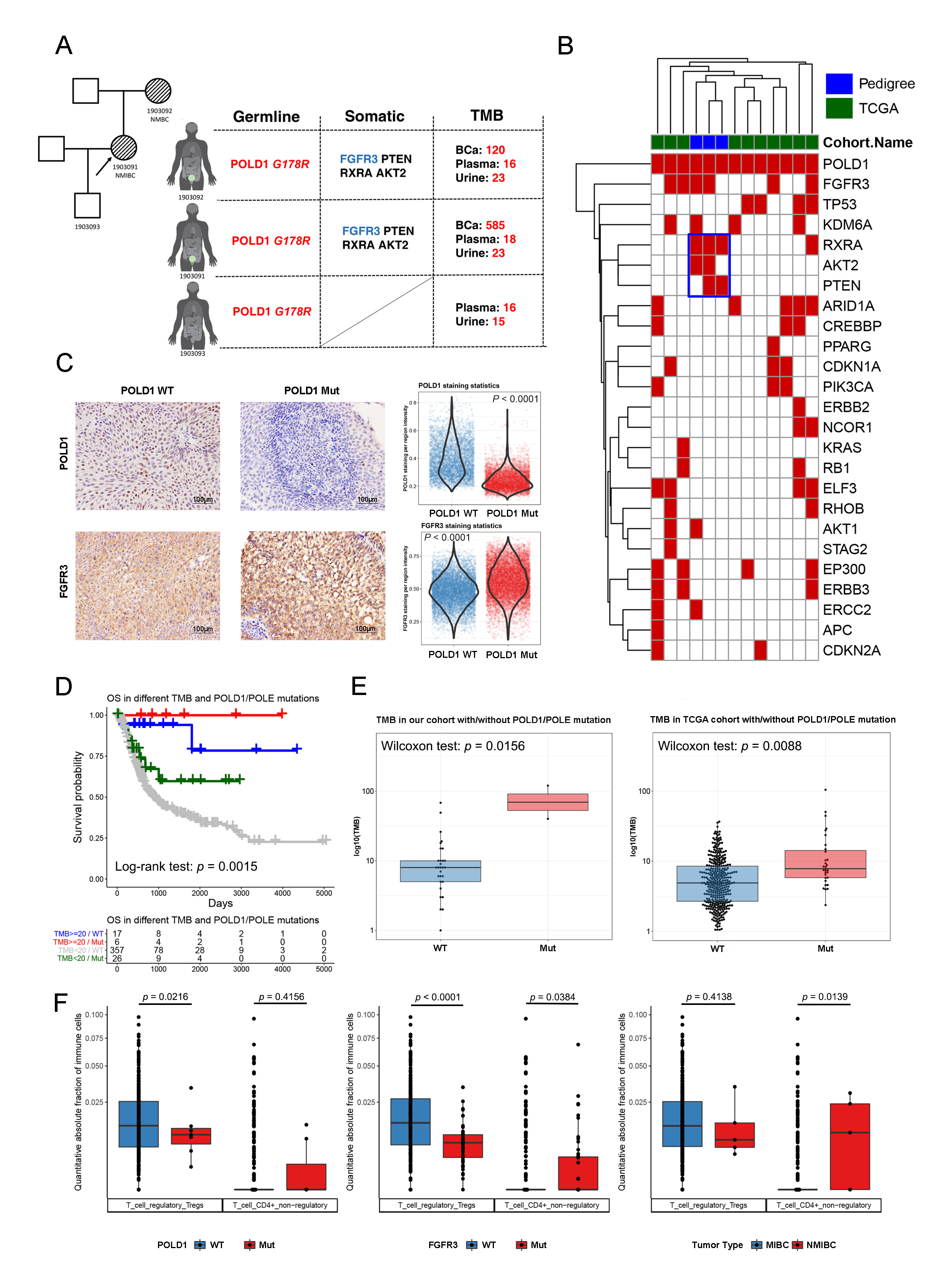Pedigree analysis of a POLD1 germline mutation in urothelial carcinoma shows a close association between different mutation burdens and overall survival
Published in Cancer and Genetics & Genomics
Bladder cancer (BLCA) is the ninth most frequently diagnosed tumor worldwide, and smoking remains a major risk factor. BCa is divided into nonmuscle invasive bladder cancer (NMIBC) and muscle invasive bladder cancer (MIBC) [1]. NMIBC accounts for 70–80% of all BCa cases, its recurrence rate is high, and 20–30% of NMIBC patients progress to MIBC [2].
Together with our collaborators at The Central Hospital of Enshi Tujia and Miao Autonomous Prefecture, Enshi, China, we found a rare pedigree in which both mother and daughter were diagnosed with NMIBC. Starting from this pedigree, we conducted an in-depth analysis of such type BLCA isoforms caused by POLD1 mutations.

We performed next-generation sequencing (NGS) to analyze the exome of three people in this family. We identified all three people of this family have a germline POLD1 mutation G178R. The G178R variant is present within the exonuclease domain of the POLD1 protein, and is a highly conserved domain not only in POLD1 but also in POLE, which may play a role in cancer [3]. Also, all these NMIBC patients in this pedigree contained FGFR3 pathogenic mutations. We found that this subtype BLCA patient tended higher tumor mutation burden, immune infiltration, and better prognosis. Our results also suggest this subtype NIMBC patients could be beneficial from immunosuppressant.
References
[1] Humphrey, P. A., et al. The 2016 WHO classification of tumours of the urinary system and male genital organs-part B: prostate and bladder tumours. Eur Urol 70, 106–119 (2016).
[2] Chamie, K., et al. Recurrence of high-risk bladder cancer: a population-based analysis. Cancer 119, 3219–3227 (2013).
[3] Palles, C., et al. Germline mutations affecting the proofreading domains of POLE and POLD1 predispose to colorectal adenomas and carcinomas. Nat Genet 45, 136–144 (2013).
Follow the Topic
-
Cellular & Molecular Immunology

A monthly journal from the Chinese Society of Immunology and the University of Science and Technology of China, covering both basic immunology research and clinical applications.

Please sign in or register for FREE
If you are a registered user on Research Communities by Springer Nature, please sign in